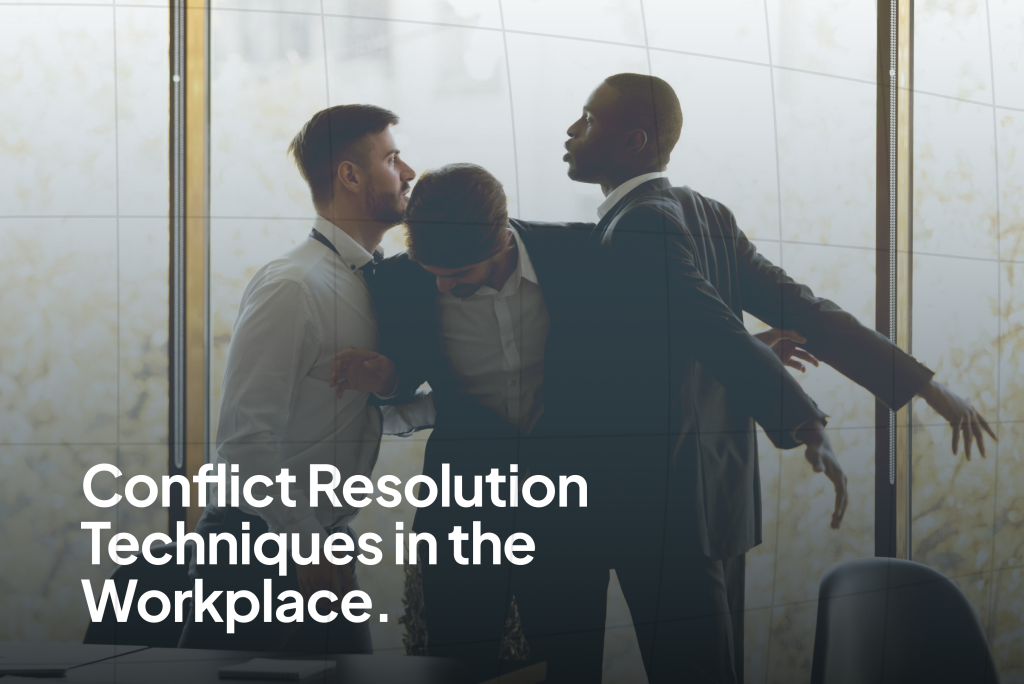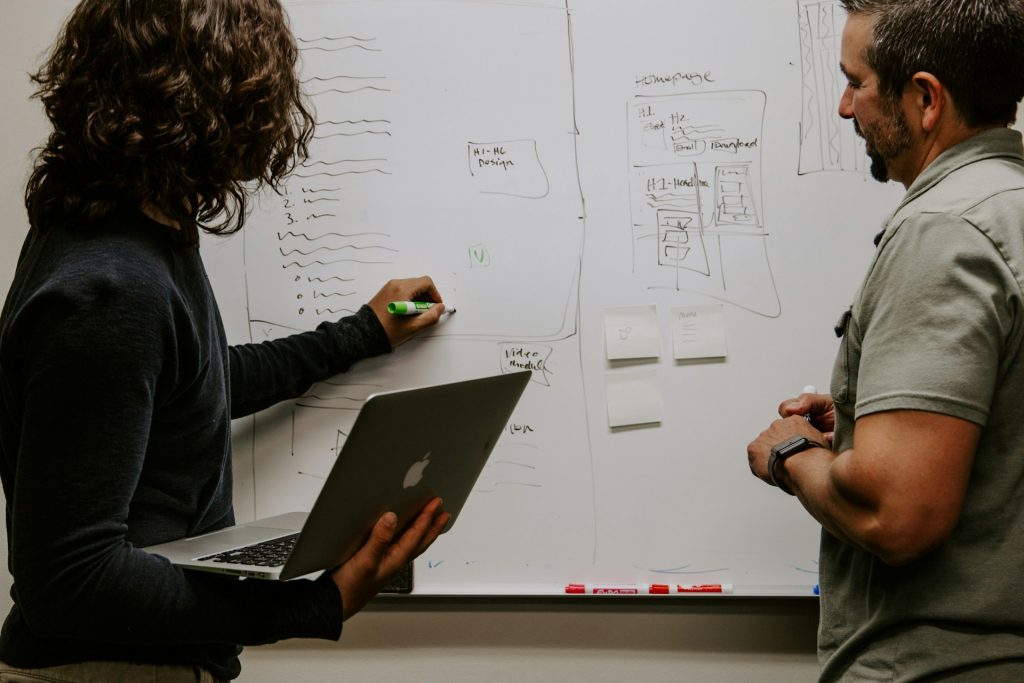
No HR professional can escape the task of resolving conflicts between employees, it’s in the job description. Interpersonal issues, misunderstandings, and differences in work styles are inevitable when people collaborate. Being prepared with effective conflict resolution techniques is essential for any HR manager. Today, we’ll discuss some key conflict resolution techniques HR managers can use to diffuse difficult situations, fostering a healthy and productive work environment.
Understanding the Importance of Conflict Resolution in the Workplace
If left unaddressed, workplace conflicts can create a toxic environment that disrupts productivity, lowers morale, and affects overall company performance. For HR managers, effective conflict resolution isn’t just about managing disputes—it’s about creating a culture of collaboration and respect. Proper conflict resolution techniques help employees feel heard, valued, and respected, all of which are crucial for maintaining a cohesive team.
In fact, research suggests that organizations with a structured approach to conflict resolution experience less turnover, greater job satisfaction, and a stronger sense of belonging among employees. By adopting the right strategies, HR managers can turn potentially disruptive situations into opportunities for growth and understanding.
1. Active Listening: Building Empathy and Understanding
Active listening is one of the most decisive conflict resolution techniques, allowing HR managers to understand the root cause of a disagreement. When individuals feel truly listened to, they are more likely to open up and express their concerns constructively. Fun fact: this goes beyond HR to employee relationships.
How to Practice Active Listening
- Listen Without Interrupting: Allow each party to share their perspective without interjecting. Even if one party says something contentious, focus on listening rather than responding immediately.
- Reflect Back What You Hear: Summarize the speaker’s points to show understanding. This can help clear up misunderstandings and demonstrate that you value each person’s perspective.
- Ask Open-Ended Questions: Encourage further explanation by asking questions that cannot be answered with a simple “yes” or “no.” This can help reveal underlying issues.
In a dispute over task delegation, active listening could reveal that one employee feels overburdened while the other is unaware of the workload imbalance. By understanding both perspectives, HR can help redistribute tasks and alleviate tension.
2. Addressing Conflicts Early: Preventing Escalation
Conflicts often escalate because they go unaddressed in their early stages. Addressing conflicts promptly is one of the most effective conflict resolution techniques for preventing misunderstandings from turning into major disputes. When HR managers address issues as soon as they arise, they can help employees resolve differences before negatively impacting morale and productivity.

How to Address Conflicts Early
- Create an Open-Door Policy: Encourage employees to bring concerns forward immediately, fostering a culture of openness and transparency.
- Be Proactive: When you notice the tension between team members, take the initiative to mediate before the conflict grows.
- Set Up Regular Check-Ins: Schedule frequent one-on-one meetings with employees to gauge team dynamics and address potential conflicts early.
If two team members show signs of friction during meetings, HR can arrange a check-in to discuss any underlying issues before tensions escalate, preventing the conflict from disrupting the team’s workflow.
3. Mediating with Neutrality: Facilitating Open Dialogue
When conflicts escalate, it’s crucial for HR managers to step in as a neutral mediator. Effective mediation facilitates an open dialogue where both parties feel safe sharing their viewpoints. Maintaining neutrality is crucial; even a hint of bias can make one party feel unheard or misunderstood.
How to Mediate with Neutrality
- Set Ground Rules: Encourage respectful communication by setting clear guidelines, such as avoiding personal attacks and focusing on the issues.
- Create a Safe Space: Hold the discussion in a neutral environment where both parties feel comfortable. The office lounge would do.
- Focus on Problem-Solving: Guide the conversation toward constructive solutions rather than assigning blame.
In a conflict where one team member feels undervalued by another, HR can facilitate a conversation to understand both perspectives and find common ground. Through neutral mediation, HR can help identify ways for the team members to work together more effectively.
4. Encouraging Compromise: Finding a Middle Ground
Sometimes, the best resolution is a compromise where each party gives up something to achieve a mutually acceptable outcome. This conflict resolution technique is handy when both parties have valid but opposing perspectives, and a clear “win-win” solution isn’t possible.
How to Encourage Compromise
- Identify Core Issues: Focus on the main points of disagreement and determine what each party is willing to adjust.
- Set Realistic Expectations: Make it clear that compromise may require both parties to relinquish particular demands for the greater good.
- Focus on Shared Goals: Remind both parties of the team’s overall objectives, helping them see how compromise contributes to collective success.
If two departments disagree on resource allocation, HR can facilitate a compromise by reallocating resources in a way that partially satisfies each department’s needs, fostering collaboration rather than competition.
5. Implementing Collaborative Problem-Solving: Working Toward a Common Solution

Collaborative problem-solving is one of the most effective conflict resolution techniques for workplace disputes. Rather than viewing the conflict as a competition, this approach encourages both parties to work together to find a solution. This technique is ideal for situations where each party has complementary skills or expertise and can contribute to the solution.
How to Use Collaborative Problem-Solving
- Define the Problem Together: Start by having both parties agree on the core issue to ensure everyone is on the same page.
- Brainstorm Solutions Collectively: Encourage both parties to share potential solutions. This often reveals creative ideas that may not have been considered in a competitive setting.
- Encourage Mutual Respect: Remind each party to listen to and respect the other’s perspective throughout the process.
When two employees disagree on project direction, collaborative problem-solving allows them to co-create a plan that integrates their ideas, promoting mutual respect and reinforcing their shared goals.
6. Encouraging Empathy and Perspective-Taking: Fostering Understanding
Encouraging empathy is a conflict resolution technique that helps employees see situations from each other’s perspectives and put themselves in the shoes of the other party. By understanding their colleagues’ motivations and challenges, employees can often let go of minor disagreements and focus on shared objectives.
How to Foster Empathy and Perspective-Taking
- Encourage Open Dialogue: Create a space where employees feel safe discussing their emotions and motivations behind their actions.
- Model Empathy: HR managers can set an example by showing empathy in their interactions with employees, creating a culture that values perspective-taking.
- Offer Training on Emotional Intelligence: Regular training sessions on empathy and emotional intelligence can help employees develop the skills to understand others’ perspectives.
In a conflict between two employees with different working styles, encouraging each to understand the other’s approach can reduce friction and promote a more harmonious working relationship.
7. Offering Conflict Resolution Training for Employees
Training employees in conflict resolution techniques can empower them to handle minor conflicts independently, reducing the need for HR intervention. Such training can also prevent conflicts from arising in the first place, as employees develop the skills to navigate disagreements constructively.
How to Implement Conflict Resolution Training
- Offer Regular Workshops: Schedule training sessions on communication, negotiation, and conflict resolution to build employees’ skills.
- Provide Resources and Materials: Share articles, videos, or guides on conflict resolution techniques to reinforce key concepts.
- Encourage Self-Reflection: Incorporate self-assessment tools that help employees understand their conflict management styles.
Training on active listening and respectful communication can equip employees with the tools to resolve conflicts independently, fostering a proactive problem-solving culture.
The Role of Documentation in Conflict Resolution
Maintaining thorough documentation of conflict resolution efforts is a critical step in any HR process. Documentation can provide a clear record of actions taken, protect the organization legally, and ensure accountability for all parties involved. It also allows HR managers to track patterns of conflict and identify potential areas for improvement within the organization.

How to Document Conflict Resolution Efforts
- Record Key Points and Agreements: Summarize the main issues discussed, any agreements reached, and next steps.
- Keep Confidentiality: Ensure documentation is secure and accessible only to relevant HR staff.
- Follow Up on Resolution Progress: Schedule follow-up meetings to assess whether the agreed-upon solution works and if further adjustments are needed.
In a case where two employees repeatedly clash, having documentation helps HR track their interactions, identify patterns, and potentially recommend mediation or further training if needed.
Building a Conflict-Resistant Workplace Culture
Prevention is always better than cure. By fostering a workplace culture that emphasizes respect, open communication, and collaboration, HR can create an environment where conflicts are less likely to arise.
How to Build a Conflict-Resistant Culture
- Encourage a Collaborative Mindset: Promote teamwork and collective success, reducing competition that can lead to conflict.
- Recognize Positive Behaviors: Acknowledge and reward employees who demonstrate collaboration, empathy, and effective communication.
- Integrate Conflict Resolution into Onboarding: Make conflict resolution training part of the onboarding process to establish expectations from the start.
Recognizing employees who excel in collaboration and respectful communication reinforces a positive culture and sets an example for others to follow.
Conclusion
Conflict resolution techniques are essential tools for HR managers, helping to create a work environment where employees feel valued, respected, and able to focus on shared goals. From active listening to collaborative problem-solving, the strategies outlined here empower HR managers to address conflicts constructively, transforming challenges into opportunities for growth.
By implementing these conflict resolution techniques and fostering a culture of empathy, respect, and understanding, organizations can reduce the frequency and impact of workplace conflicts. In turn, this contributes to higher productivity, greater job satisfaction, and a stronger sense of community within the workplace.
